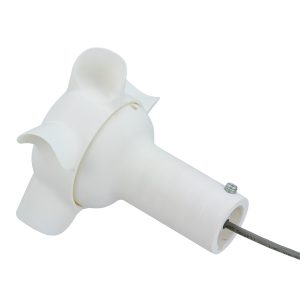Build Your Own Anemometer?
Good anemometers can be expensive. Numerous do-it-yourself versions can be found on the Internet and are made with various components from paper cups to PVC pipe fittings. There are even some 3D printed designs that emulate molded or machined anemometers, but are typically very fragile.
The electronics for do-it-yourself weather instrument are often based on hobby boards, such as Raspberry Pi or Arduino. While function for some applications, they may not offer the robust features for commercial applications.
Import Difficulties
Commercial wind sensors can be difficult to import into some countries. The price of the product, shipping, import duties, and other hurdles can greatly increase the total cost. Users must often work through exclusive dealers, which can be good or bad, depending on the dealer. Service and repair parts have similar complications.
Dyacon Solution
Dyacon began a project to address the following issues:
- Reduce purchase price
- Reduce import costs
- Improve serviceability
- Leverage modern technology
- Utilize in-country skills
As an initial step, Dyacon has developed a wind sensor, specifically for 3D printing (additive manufacturing). The innovative concept is mechanically robust, repeatable, easy to assembly, and easy to repair. The sensor has been tested above 31 m/s (70 mph, 112 kph).
The Dyacon 3D printed anemometer concept consists of three classes of components:
- 3D printable, wind-tunnel validated, mechanical design.
- Dyacon Hardware kit (Axle, bearings, and assorted screws).
- Dyacon sensor board.
- Assembly instructions.
The 3D printed anemometer parts would be produced by the customer or a Dyacon partner in the destination country. The remaining components would be imported as components (or repair) hardware, minimizing the import costs.
Challenges
Let’s not fool ourselves and presume that 3D printing is easy. There is a significant investment in equipment and skills. Fused filament fabrication (FFF) can require significant skill with different settings for part geometries. Layer adhesion, mechanical strength, part shrinkage, print accuracy, and mechanical fit can be unique to each printer, component, and material.
Assembly skill is also required. Not to mention some testing. In other words, if a user wants a single sensor, it may not be a viable option.
Benefits
While this model does not fit all applications, it offers a compelling opportunity for mid-range weather station needs.
- Wind-tunnel tested design
- Skill participation and value added by the customer or distributor
- Mechanical repair parts can be manufactured as needed
- Import costs are minimized
- Robust electronic solution
Call Us
If you would like to participate in this project as a reseller or distributor, please contact us.

3D Printed Wind Sensor, w-Cable
